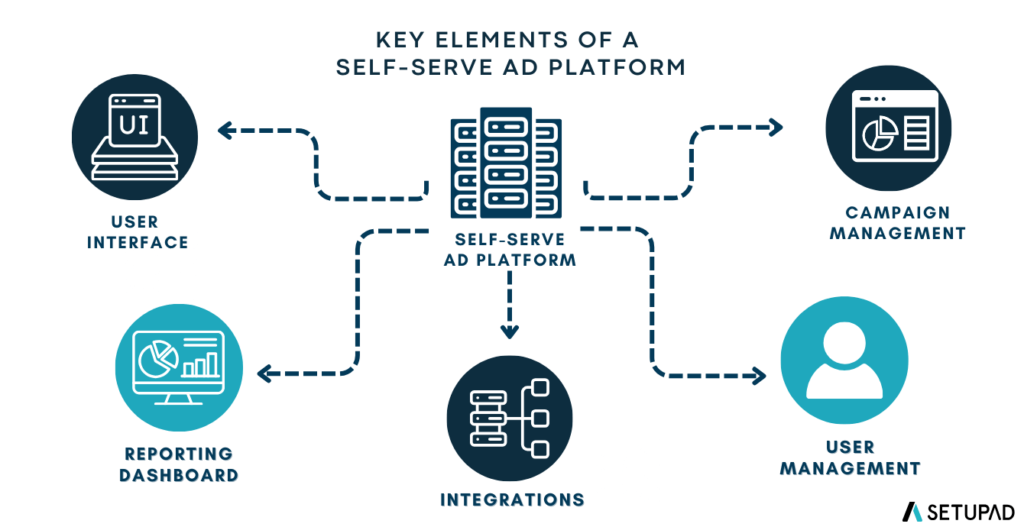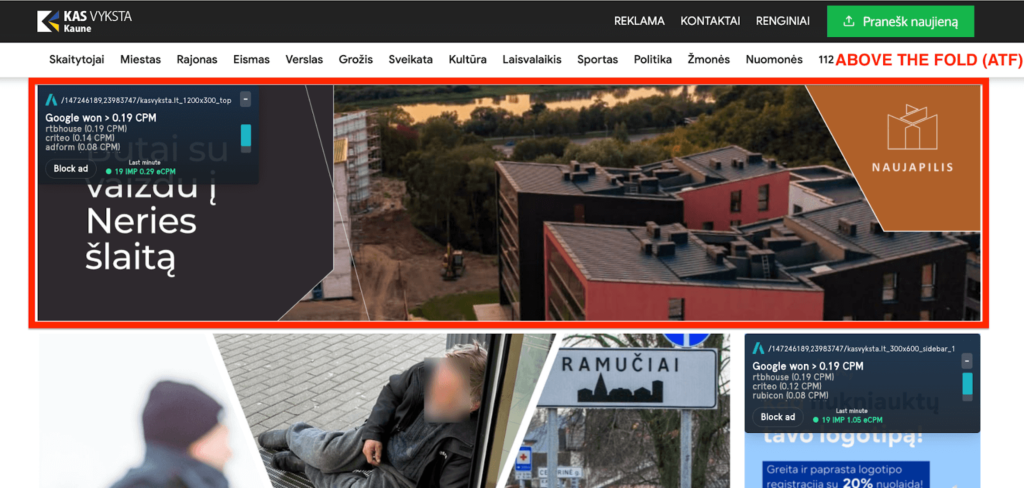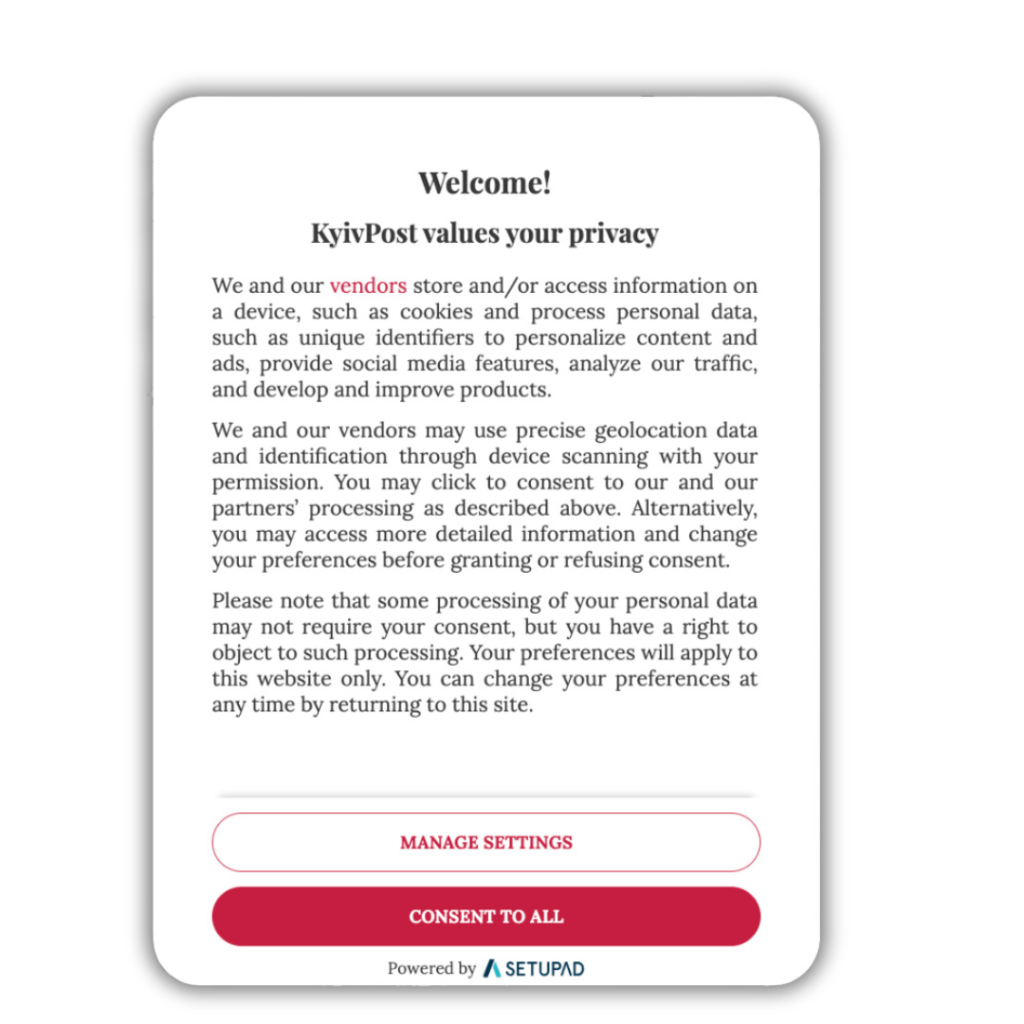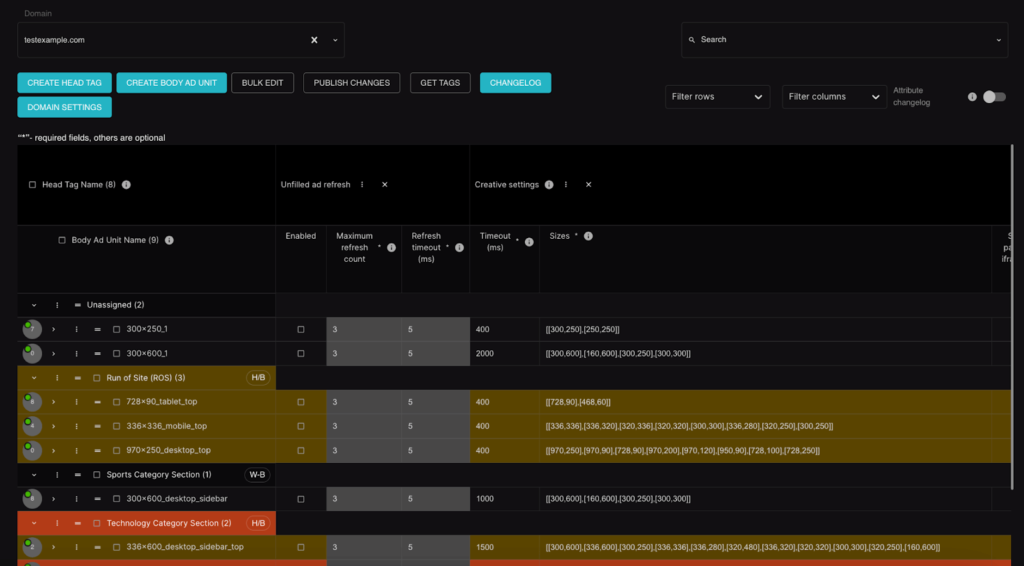What is Self-Serve Advertising? | A Guide For Publishers
What is Self-Serve Advertising?
A self-serve advertising is a type of digital advertising service or platform that allows individuals or businesses to create, manage, and optimize their own advertising campaigns without the need for direct intervention by the service provider.
These platforms are designed to be user-friendly, making it accessible for advertisers of all skill levels, from small business owners to marketing professionals. Here are some key aspects of self-serve advertising platforms.
Normally, the two key benefits that unite any self-serve technology is accessibility and scalability.
From the Publishers’ Side
Although the term ‘self-serve advertising’ is still new and contested, normally we would understand any sort of advanced programmatic technology that allows publishers to manage their monetization activities, for example, header bidding, on their websites independently. This can include but is not limited to a suite of tools aimed at optimizing programmatic advertising revenue and streamlining ad operations.
From the publisher’s perspective, self-serve ad networks provide a convenient and effective way to monetize their websites or digital platforms.
From the Advertisers’ Side
A self-serve advertising platform for advertisers allows to create, manage, and optimize advertising campaigns without the need for direct intervention by the service provider. These platforms are designed to be user-friendly and accessible for professionals of all levels.
Here are some key benefits of self-serve advertising platforms for advertisers:
- Flexibility: Advertisers have full control over their campaigns, including targeting, budget, ad formats, and scheduling. This flexibility allows for quick adjustments based on campaign performance.
- Cost-Effectiveness: Self-serve platforms often operate on a pay-per-click (PPC), which can be more cost-effective for advertisers, as they’re only paying when someone clicks on their ads.
- Real-Time Analytics and Reporting: Advertisers can track the performance of their campaigns in real-time, with access to detailed analytics and reporting tools. This data helps in making informed decisions to optimize campaigns.
- Accessibility and Scalability: These platforms are generally accessible and suitable for advertisers with different budgets. Often, self-serve platforms include tutorials so marketers can start using them without extensive technical knowledge.
- Variety of Ad Formats: Self-serve platforms typically support a range of ad formats, like display ads, video ads, and rich media ads, suitable for different platforms like search engines, social media, and websites.
The most popular examples of self-serve advertising platforms for advertisers are Google Ads and Facebook Ads Manager.
How Does it Work?
Self-serve platforms for publishers usually integrate various technologies into a unified system. This integration often includes tools like Prebid, Google Ad Manager (GAM), and Amazon Publisher Services (APS).
Prebid is typically connected to an ad server, commonly using Google Ad Manager (GAM) with price priority line items, and managing SSP connections is done in Prebid.js code, which can be cumbersome. In a standard setup, each SSP or DSP sends its bids to Google Ad Manager with specific prices, activating a corresponding key-value pair in GAM. The ad is displayed based on the highest bid, determining the winning price and displaying the advertisement accordingly.
Alvils Karlštrems, Head of Ad Operations at Setupad:
«Ease of management is essential for all technologies involved, particularly in tasks like integrating new SSPs, adjusting settings such as timeouts, refresh rates, ad sizes, and other configurations. Self-serve platforms that are designed for publishers excel in simplifying these tasks.
These platforms should facilitate seamless management without requiring manual code modifications when integrating new demand sources or optimizing existing setups. They can empower publishers to efficiently handle various configurations and enhancements, ensuring a smoother and more adaptable advertising ecosystem.»
Benefits of Self-Serve Advertising for Publishers
1. Increased Revenue Streams
A self-serve platform would traditionally be equipped with an advanced monetization technology, like header bidding, allowing multiple ad exchanges to bid on the inventory simultaneously, publishers can achieve higher fill rates and better CPMs, thus maximizing their ad revenue.
2. Streamlined Operations
Self-serve platforms are designed to ease everyday operations, for example, a self-serve platform like Setupad Prebid Self-Serve excel in ad unit creation, offering a concise and streamlined process and eliminating the need to mapping ad units and placing tags live on a site. This efficiency in setting up ad units is crucial for publishers who need to manage their time and resources effectively.
3. Reduced Operational Costs
One of the main benefits of using self-serve platforms is that publishers don’t need to work on a rev-share model, which is a typical business model with ad networks or agencies. Although some self-serve platforms are free (OpenWrap), it may be tempting to upgrade functionality and save yourself the hassle by opting for a more advanced tool like Setupad Prebid Self-Serve.
Related Article: Setupad Prebid Self-Serve Vs. Pubmatic OpenWrap: A Comparison
4. Flexibility
The self-serve advertising platform is designed for easy integration with a publisher’s existing ad tech stack, for example, the publisher’s ad server. It should provide a user-friendly interface for managing header bidding partners, ad placements, and auction settings.
5. Increased Control Over Ad Campaigns
The platform offers high levels of transparency and control over the bidding process, giving publishers insights into bid behavior and the ability to set floor prices and other auction parameters.
6. Data Insights
Publishers have access to real-time analytics and detailed reporting, enabling them to track performance, identify trends, and make data-driven decisions to optimize their ad revenue.
Many of the top-tier self-service advertising platforms offer a bespoke reporting and analytics tool that enables publishers and advertisers to immediately access exportable real-time and historical data via charts and tables.
Setupad’s Self-Serve Platform for Publishers
Setupad Prebid Self-Serve emerges as an ideal choice for publishers looking for a self-serve advertising platform, primarily due to its advanced features and user-centric design. It offers a user-friendly interface for managing various ad accounts, including Google Ad Manager (GAM), Google AdSense, and direct SSP accounts. This interface is not only intuitive but also provides publishers with comprehensive control over their ad operations and revenue generation strategies.
The infrastructure of Setupad Prebid Self-Serve is robust, featuring stable and frequently updated Prebid.js versions, minimized script size served with Brotli compression for faster load times, and a wrapper hosted on Azure cloud delivered from Cloudflare. These technical attributes ensure better scalability, performance, and security, with Boltive anti-malvertising software included for enhanced ad safety.
Ease of integration is a significant advantage of Setupad Prebid Self-Serve. It automates complex processes like GAM configuration for Prebid connection, implementation of line items for optimal price granularity, and currency settings with automatic and daily updated exchange rates. This automation reduces the need for technical expertise and simplifies the setup process, making it accessible even to publishers with limited IT resources.

Key Features of Self-Serve Advertising Platforms

1. User Interface
From a publisher’s perspective, a user-friendly interface is essential for effortless management of ad inventory. It allows publishers to easily monitor their ad performance, manage placements, and understand revenue streams. A clear and intuitive interface helps in making informed decisions quickly, enhancing the overall efficiency of ad space management.
2. User Management
Publishers can offer advertisers more value by accurately targeting their desired audiences. This results in higher engagement rates and, consequently, can lead to increased ad revenue.
With the industry’s shift to privacy-first, it’s important that a self-serve platform is equipped with first-party ID solutions.
3. Reporting Dashboard
The reporting dashboard in self-serve advertising tools serves as the nerve center for publishers and provides insights into real-time data, historical data, segmented audiences (by geography, traffic source, etc), and more.
4. Campaign Management
Campaign management tools on the publisher side allow publishers to manage their ad inventory, set up ad units and define where ads will appear on their sites.
5. Integrations With Other Marketing Tools
Data drives decision-making, so integration with various marketing tools is key for publishers to streamline their workflow and gain comprehensive insights. At the most basic level, there has to be an integration with Google Analytics (GA4) and Google Ad Manager (GAM).
Self-Serve Advertising Platform Drawbacks
1. The Learning Curve
Self-serve platforms, with their myriad features and tools, can be complex and may require a significant amount of time and effort for publishers to master. This learning curve can be particularly steep for those without prior experience or those who are not tech-savvy.
When choosing a self-serve tool, make sure it has a regularly updated knowledge hub with tutorials and instructions for implementation and troubleshooting. Some platforms will also have a dedicated support person available for additional cost.
2. Ensuring Ad Quality and Brand Safety
Maintaining high ad quality and ensuring brand safety are critical concerns for publishers. On self-serve platforms, publishers have more direct control over which ads appear on their site. However, this also means they bear the responsibility for vetting ads and advertisers, which can be a demanding process.
This is the reason why Setupad’s Prebid Self-Serve comes with an added layer of security at no additional cost – anti malvertising software Boltive. But not all self-serve platforms will have this functionality, which means most likely you’ll need to spend your own money to implement it.
3. Navigating the Competitive Landscape
The digital ad space is highly competitive, with numerous publishers vying for advertisers’ budgets. In a self-serve environment, publishers must actively compete to attract and retain advertisers.
This competition not only pressures publishers to keep their ad offerings and user engagement metrics attractive but also to continuously innovate and adapt to changing advertiser demands and market trends. Smaller publishers might find it challenging to stand out and secure high-value ad deals, especially when up against larger sites with more traffic and advanced ad tech capabilities.
Maximizing Revenue with Self-Serve Advertising
Best practices for ad placements
Best practices for ad placement are crucial for publishers to maximize revenue with self-serve advertising. Here are 5 key strategies:
- Place Ads Strategically: Place ads in high-visibility areas like above the fold (ATF), within the content, and at the end of articles.

- Respect the User Experience: Ensure that ads do not disrupt users’ ability to consume content. Avoid placements that can lead to accidental clicks (Google’s two-click penalty), such as too close to navigation buttons or within the flow of content in a way that can be mistaken for the content.
- Optimize for Mobile: Given the prevalence of mobile browsing, ads should be optimized for mobile devices. This means considering smaller screens’ size, placement, and loading times to ensure that ads are effective and not disruptive on mobile.
- Balance Quantity and Quality: While more ads can lead to more revenue, overcrowding a page with ads can degrade the user experience and lead to ‘banner blindness,’ where users ignore ads completely. A balance should be found that maintains site aesthetics and user engagement.
- Test and Optimize: Test different ad formats and placements to determine what works best for your audience and content. Use the help of your monetization partner to determine the best ad placement strategies.
Using data to optimize ad performance
By adopting the following strategies, publishers can leverage data to optimize ad performance while respecting increased privacy regulations.
- First-Party Data: Encourage users to provide data directly through subscriptions, sign-ups, and interactions. This helps unlock important leverage in the post-cookies era and increase the value of your inventory for advertisers.
- Contextual Targeting: Contextual data analyzes the content that users engage with, and publishers can serve relevant ads based on the page’s topic rather than personal user information.
- Consent Management Platform (CMP): Implement a robust CMP that clearly explains data usage policies and allows users to control their data preferences. Choose a platform that is both IAB and Google-approved, like Setupad.

- Privacy-First Analytics: Use analytics tools designed to work within the boundaries of privacy regulations. Tools that aggregate data without identifying individual users can provide insights while maintaining user privacy.
- User Experience Optimization: Data can be used to optimize the user experience, such as improving site speed and layout, which can indirectly improve ad performance by retaining users on the site longer.
Building relationships with advertisers
Strong relationships with advertisers can lead to long-term partnerships. Advertisers are more likely to continue investing in ad spaces and utilize more lucrative ad placements, such as native advertising or sponsored content.
When publishers understand what advertisers are looking for and can deliver strong results, they can command premium pricing for their ad inventory.
Reach your goals with Setupad’s Self-Serve Solution
Setupad’s Self-Serve solution has a built-in module for adding or removing SSPs, adjusting ad refresh rates, setting timeouts, and creating new ad units. These features are preset and adjustable without code updates, allowing publishers to tailor their ad experiences to their specific needs.
It excels in ad unit creation, offering a concise and streamlined process, saving publishers precious time and resources.

Finally, the Setupad Prebid Self-Serve platform also provides comprehensive reporting features, a unified view of monetization, performance, and audience data, with a broad range of metrics available. The Yield Formula feature connects with GA4 for deeper insights and growth projections, enabling publishers to make more data-driven decisions.

Frequently Asked Questions (FAQs)
What initial investments are required for publishers to adopt self-serve advertising?
Publishers may need to invest in integrating the self-serve platform with their existing website or app infrastructure. This can sometimes require a developer or AdOps resources.
There could be costs associated with training staff to use the new system effectively and with important add-ons like an anti-malvertising solution.
How can publishers ensure they’re reaching the right audience with their ads?
Publishers should use first-party data available to them, utilize user behavior on the site, and gather user feedback to create detailed audience segments.
Are there any hidden fees or charges associated with using self-serve platforms?
Yes. Not all platforms will disclose it, but many may charge a percentage of ad revenue or have subscription fees. Importantly, publishers could incur extra fees if there’s a cap on the number of ad impressions. Additional features, such as IT support, may cost extra.
How do self-serve advertising platforms handle data privacy concerns?
Self-serve platforms usually have integrated consent management systems that comply with privacy regulations. Additionally, the platforms should employ data anonymization and encryption to protect user privacy.
What kind of support can publishers expect when transitioning to a self-serve model?
Access to a community forum, knowledge base, tutorials, and best practice guides can be valuable for self-service adoption. Many platforms offer guided onboarding processes to help publishers set up and start using the platform. Dedicated AdOps or IT support may be accessible at an extra cost.


